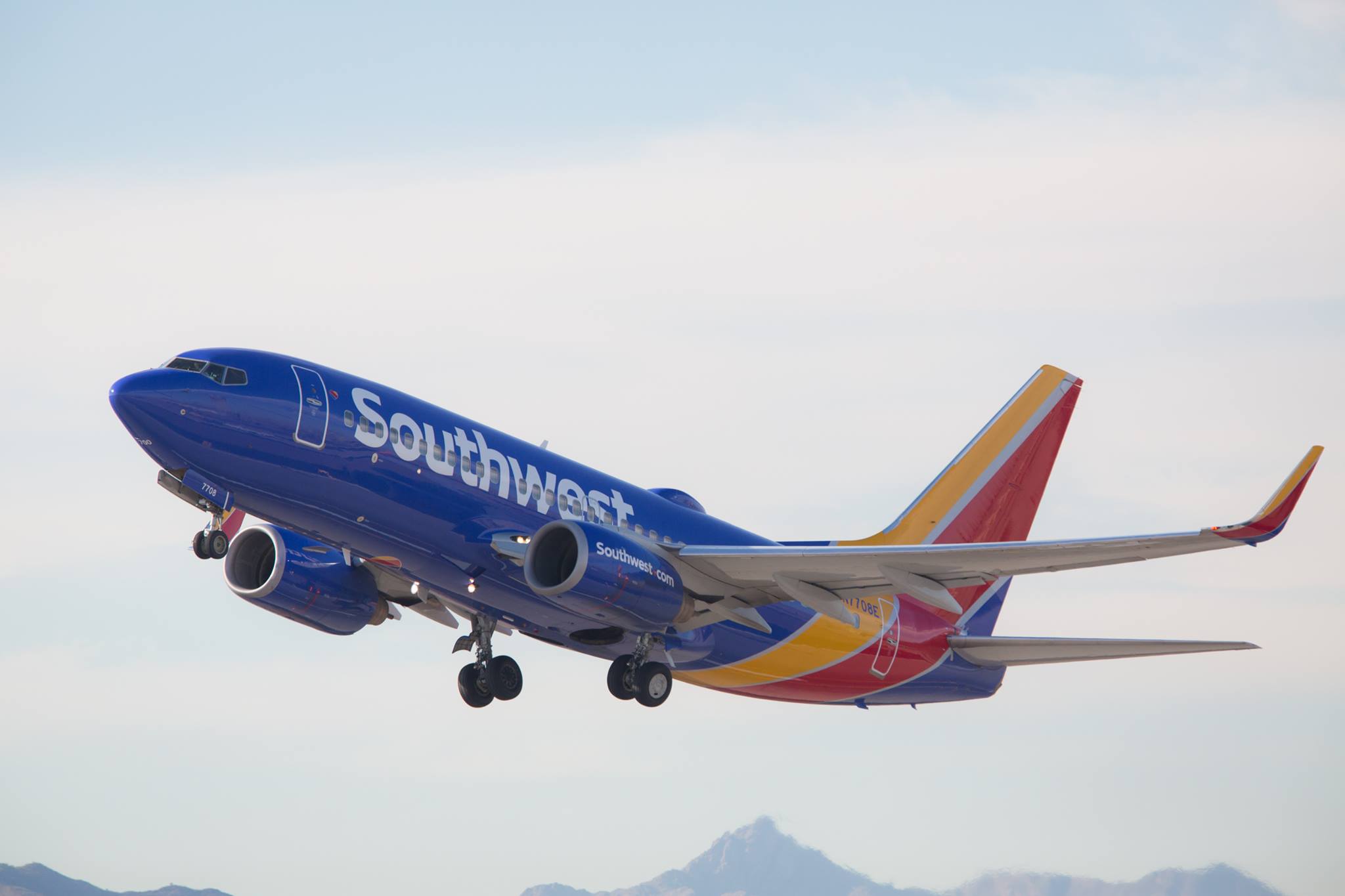For most of the past year, Southwest Airlines (LUV 1.63%) has been delaying its plans for growth in Hawaii. Initially, it took a little longer than expected for the carrier to gain FAA approval to begin long overwater flights. This scuttled its ambition to launch at least one route to Hawaii before the end of 2018. Ultimately, Southwest wasn't able to begin flying to Hawaii until March 2019.
More recently, the grounding of the Boeing 737 MAX prevented Southwest from expanding quickly beyond its initial set of four West Coast-Hawaii routes and two interisland routes.
However, Southwest Airlines announced last month that it was ready to resume its growth in Hawaii. And earlier this week, the popular low-fare airline accelerated and expanded its plans to add more service to and within Hawaii, challenging incumbents Hawaiian Holdings (HA +0.00%) and Alaska Air (ALK 0.13%).
Even more growth on the way
In mid-August, Southwest Airlines said that it would start service on three new interisland routes next January: Honolulu-Lihue (four daily round trips), Honolulu-Hilo (four daily round trips), and Kahului-Kona (one daily round trip). It also announced five new West Coast-Hawaii routes that would begin at the same time, including Sacramento-Honolulu service and flights from Oakland to Kona and Lihue and from San Jose to Kona and Lihue. Southwest will fly the Sacramento-Honolulu route daily, while the other routes will operate three or four times per week.

Southwest Airlines is ready to ramp up its growth in Hawaii. Image source: Southwest Airlines.
On Thursday, Southwest advanced the start date for its Honolulu-Lihue and Sacramento-Honolulu flights. Rather than beginning on Jan. 19, 2020, service will launch on Nov. 10, 2019 for both of these routes.
Additionally, the carrier plans further growth in the West Coast-Hawaii market in early 2020. All four new routes connecting Oakland and San Jose to Kona and Lihue will be upgraded to daily service in early March. That will roughly double Southwest's capacity in those markets compared to its previous plan. Southwest Airlines also announced another new route: It will begin daily Sacramento-Kahului service on March 7.
Southwest's plan to accelerate the launch of two of its new routes isn't very significant in the long run. By contrast, adding six more daily round trips between Northern California and Hawaii over the next six months -- up from three additional daily round trips under its previous plan -- will ramp up the competitive pressure on Hawaiian Airlines and Alaska Airlines.
The Northern California-to-Hawaii market is getting overcrowded
So far, all of Southwest Airlines' mainland-Hawaii flights originate in Northern California. The six daily flights from Oakland and San Jose to Hawaii that it added earlier this year were the main driver of a 23% year-over-year surge in seat capacity between the Bay Area and Hawaii last month. Meanwhile, new Alaska Airlines and Hawaiian Airlines routes drove a 46.5% increase in the number of seats on offer from Sacramento to Hawaii.

Image source: Hawaiian Airlines.
Thus, the broader Northern California-to-Hawaii travel market is already absorbing massive capacity growth, weighing on airfares. The additional flights that Southwest is planning will exacerbate this issue.
Assuming no change in service patterns by Alaska and Hawaiian, Southwest's launch of Sacramento-Hawaii flights will boost capacity in that market by 57% by next spring compared to recent levels. On the same basis, industry capacity to Hawaii would rise 20% in Oakland and 28% in San Jose. (The percentage increase for the Bay Area as a whole would depend heavily on capacity trends at San Francisco International Airport, which handles more traffic than the Oakland and San Jose airports combined.)
It's true that new flights can stimulate demand, as lower fares enable price-sensitive consumers to travel more and encourage more people to fly nonstop. However, at a certain point, airlines will struggle to make money at the fares needed to fill all of the incremental capacity. The market for travel from Northern California to Hawaii could pass this point because of Southwest's planned growth over the next six months.
Who will blink first?
At the beginning of 2019, Alaska Airlines had a monopoly on the Sacramento-Kahului route. Hawaiian Airlines matched Alaska's daily service on the route in April. After the new Southwest Airlines flight begins next March, capacity on the route will have more than tripled in just under a year.
It's unlikely that all three airlines' flights will be sustainable. Southwest has the advantage of being the largest carrier by far in Sacramento. Hawaiian can connect customers from Kahului to smaller destinations in Hawaii. By contrast, Alaska's first-mover advantage probably won't be enough to make it competitive in the long run. It may be able to manage during the spring and summer peak periods, but there's a good chance that it will redeploy capacity from this route to more promising opportunities later in 2020.
The situation is similar in the Bay Area. Alaska Airlines flies each of the four new routes Southwest Airlines is launching, between three and five times a week. It currently has monopolies on all four, except for Oakland-Lihue, which has had daily Hawaiian Airlines service since July 2018.
Capacity between the Bay Area and Lihue has more than doubled over the past two years. There has also been significant growth to Kona. Southwest's flights will further exacerbate the supply demand imbalance. Alaska may be able to support some service to Hawaii from San Jose, where it is the No. 2 carrier, but it is unlikely to do so from Oakland, where its competitive position is quite weak.
Thus, Southwest Airlines' most recent expansion plan is more likely to force route cuts at Alaska Airlines than at Hawaiian Airlines. However, on the bright side, Alaska should have plenty of profitable redeployment opportunities for its aircraft. By contrast, Hawaiian may not have to cut any flights, but it will probably face some margin pressure until demand catches up to the recent supply growth.







